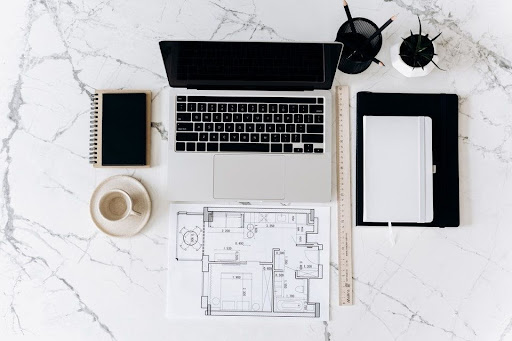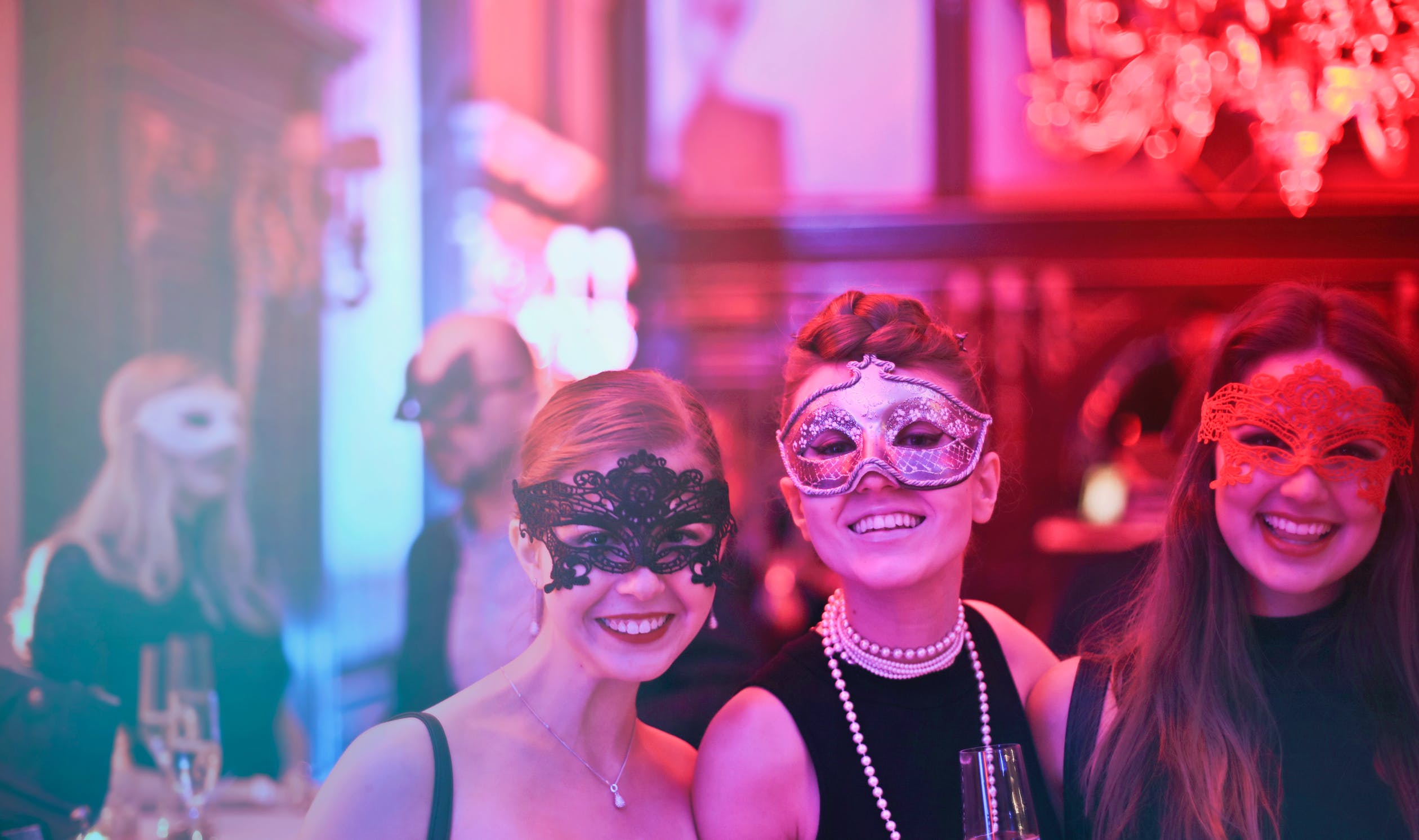Graphic designers create visual solutions for communication media, websites, advertising, etc., while interior designers create visual and functional solutions for interior spaces, like residential homes, hotels, and offices. In this blog, you will know Relation Between Graphic and Interior Design: 7 Common Points.
Although they seem like two very different worlds, they actually have a lot in common.
Therefore, spending effort on one subject can benefit the other, and vice versa.
If you’re interested in finding out how the two relate, keep reading. Throughout this article, we will discuss seven common points between graphic design and interior design.
Let’s take it on right away.
Table of Contents
What is graphic design?
Graphic design consists of creating visual concepts, mainly for businesses and brands.
Its goal is to inspire, inform, or captivate consumers and users through visual content that includes images, words, and graphics.
Graphic designers use colors, fonts, images, shapes, logos, and more to convey a certain feeling or idea.
With the help of these marketing presentation templates, you may be able to gain a better understanding of the type of work that graphic designers do.
Graphic design types
- Product design – used to develop new products or new features for existing products.
- Branding design – a type of corporate design that emphasizes a company’s visual identity.
- Website design – graphic design type used to create user-friendly and optimized websites to ensure the best UX and performance.
- Print design – used to create a design for physical materials. Business cards and billboards are two examples.
- Environmental design – combining basic design principles with architectural and landscape elements to produce signs, maps, and other visual aids to orient people.
- Animation design – used to create different animations, from animated social media graphics to video cartoons.
What is interior design?

Interior design involves the art and science of arranging a room’s furniture and decorations so as to create a functional and visually appealing overall environment.
Combining different types of furniture and decorations, colors, textures, and more contributes to creating and inspiring specific feelings.
Interior design actually involves multiple disciplines and stages, from research to design realization.
Interior design types
- Interior and spatial design – refers to the process of designing and renovating interior spaces. This type of interior design includes lighting, furnishing, and color schemes.
- Exhibition design – refers to the interpretation and development of a client’s interior design idea.
- Production design – pertains to the creation of visual effects for stage and television productions by designing sets, lighting, graphics, costumes, and camera angles.
- Visual merchandising– entails developing, delivering, and communicating visual strategies and concepts to promote services and products online, in-store, or in catalogs.
7 Similarities between graphic and interior design

Even though the definitions of graphic and interior design outlined above might give you the impression that they are completely different disciplines, the following common points will change your mind.
Let’s find out what they are.
1. Color
Color is one of the first things that graphic and interior design have in common.
Color is one of the first things you think about when you are selecting furniture for a room in your home. This applies to graphic design as well.
In fact, color plays a crucial role in both disciplines. By selecting colors that don’t combine well together, you may end up with an unattractive look that can ruin everything you’ve done so far.
That is why before starting any project, regardless of whether it is related to interior design or graphic design, you should choose a palette of colors that look harmonious together.
The internet offers many websites, such as ColorHunt, where you can easily select a pre-made combination of color palettes.
2. Space
Another factor to consider when mentioning common points between graphic and interior design is space.
In graphic design, space, or balance, refers to the combination of elements on a canvas, and in interior design to the combination of furniture.
If the overall look of your work is unbalanced, then it will look messy, unprofessional, and not pleasing to the eye.
Therefore, analyzing the space available to you and planning the layout in advance can let you end up with a harmonious look and prevent you from spending time and money to fix unbalanced visuals or projects.
When it comes to interior design, you might find it useful to begin your project with some realistic 3D interior design software. For instance, Foyr, a house floor plan creator program, lets you visualize your project in 3D, use artificial intelligence, and adjust the lighting automatically.
3. Lines
Lines have the ability to influence the perception of space.
There are three types of lines: vertical, horizontal, and dynamic. The different types of lines inspire us to feel differently. Horizontal lines, for example, impart a feeling of security and comfort, whereas vertical ones create an airy and lofty environment.
These rules are applicable and work on both interior design and graphic design.
No matter if it has to do with furniture, decorations, or digital elements, lines can have a significant impact on them and inspire the viewer with the feeling you are trying to communicate.
It is especially useful in both scenarios. Using graphics design as an example, you may wish to influence users through your work to take a particular action, whereas when using interior design you may wish to make people feel a certain feeling in the room (e.g., a relaxing and cozy atmosphere in a bedroom).
4. Forms and shapes
Similar to lines, also shapes and forms can communicate a certain mood and realize a certain style.
The shapes can either be geometric (angular) or natural (curves). The shapes can also be open or closed.
When you play with them, you can create the environment or design you want, whether you are renovating an old house or creating digital artwork.
Therefore, we can include this element among the points in common with the two disciplines.
5. Patterns
A pattern is a collection of both lines and shapes, and just as these elements stand alone, they can each create a unique look and inspire specific feelings.
Patterns are applicable in both the graphic and interior design fields.
If you want to use patterns in interior design, you might use bold statement wallpaper or create a wall that has original combinations of colors. You can also use patterns on decorations, such as frames, pillows, and other furniture, in addition to walls.
With regard to graphic design, there are many ready-made digital patterns for you to choose from or you can even design your own from scratch. In any case, the pattern will give your work an eye-catching appearance.
7. Texture
The texture has an impact on both the feeling and appearance. There are two types of textures: actual and visual.
The actual texture is what you feel when you touch material, while the visual texture is what you feel when you look at it.
An example would be wood wallpaper, which isn’t really wood but appears to be.
Unlike the first type of texture (actual), the second type of texture (visual) can easily be used for both interior design and graphic design, adding another point of similarity between them.
Specifically, graphic designers can use visual textures in digital graphics to provide a certain feeling to viewers’ eyes.
8. Balance of light
Light balance is another aspect to consider when discussing similarities between graphic design and interior design.
You can change the feeling you convey through your interior design and graphic design by balancing the light in different ways.
There are two types of light in physical space: artificial and natural. It is possible for the first one to impart a colder feeling than the second. By positioning windows strategically, interior designers can play with natural light in order to emphasize certain furnishings or colors in the room.
However, the light strategy can also be applied to graphic design. A graphic designer can balance the light of various elements to accentuate some (increasing luminosity) and put others in the background (decreasing luminosity).
You may also want to try playing with the light to inspire a particular mood in addition to the accents. For example, a dim light can evoke mystery.
Can a graphic designer do interior design?
Considering the points outlined above, graphic design and interior design actually have a lot in common, which makes it easy for people who practice one to also practice the other.
Even so, some aspects of interior design do not fall within the scope of graphic design.
Before diving into interior art wholeheartedly, it would be therefore necessary to integrate those missing competencies and knowledge.
Conclusions
The worlds of graphic design and interior design may appear to be separate. Despite that, as you might have noticed throughout this post, they have much in common.
It is evident that these two subjects are not too far apart and that they actually require an equal amount of strategies and movements to achieve some specific results, such as communicating ideas visually and solving problems.
I appreciate you taking the time to read this article. I hope it was informative and inspiring to you.


















